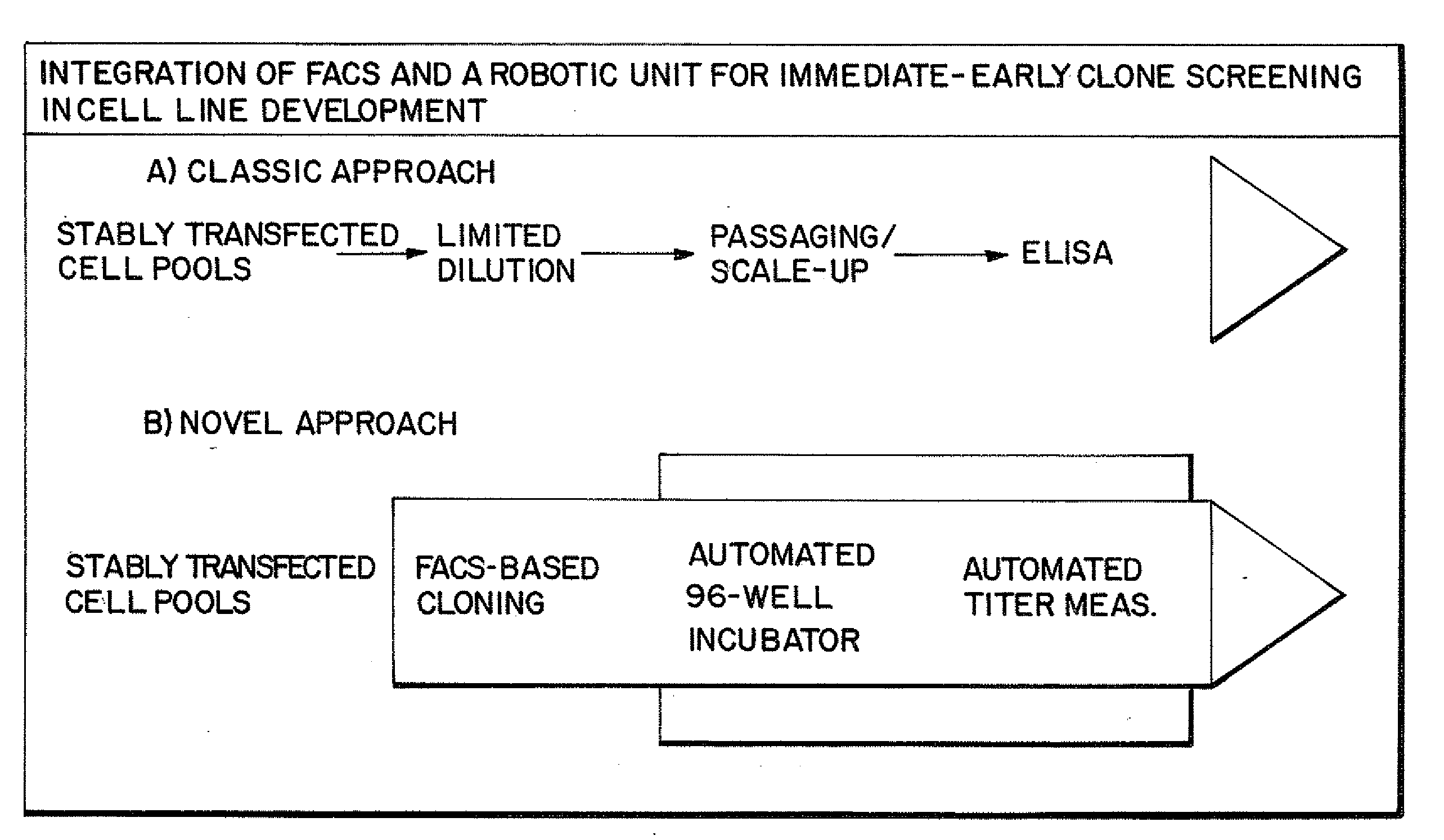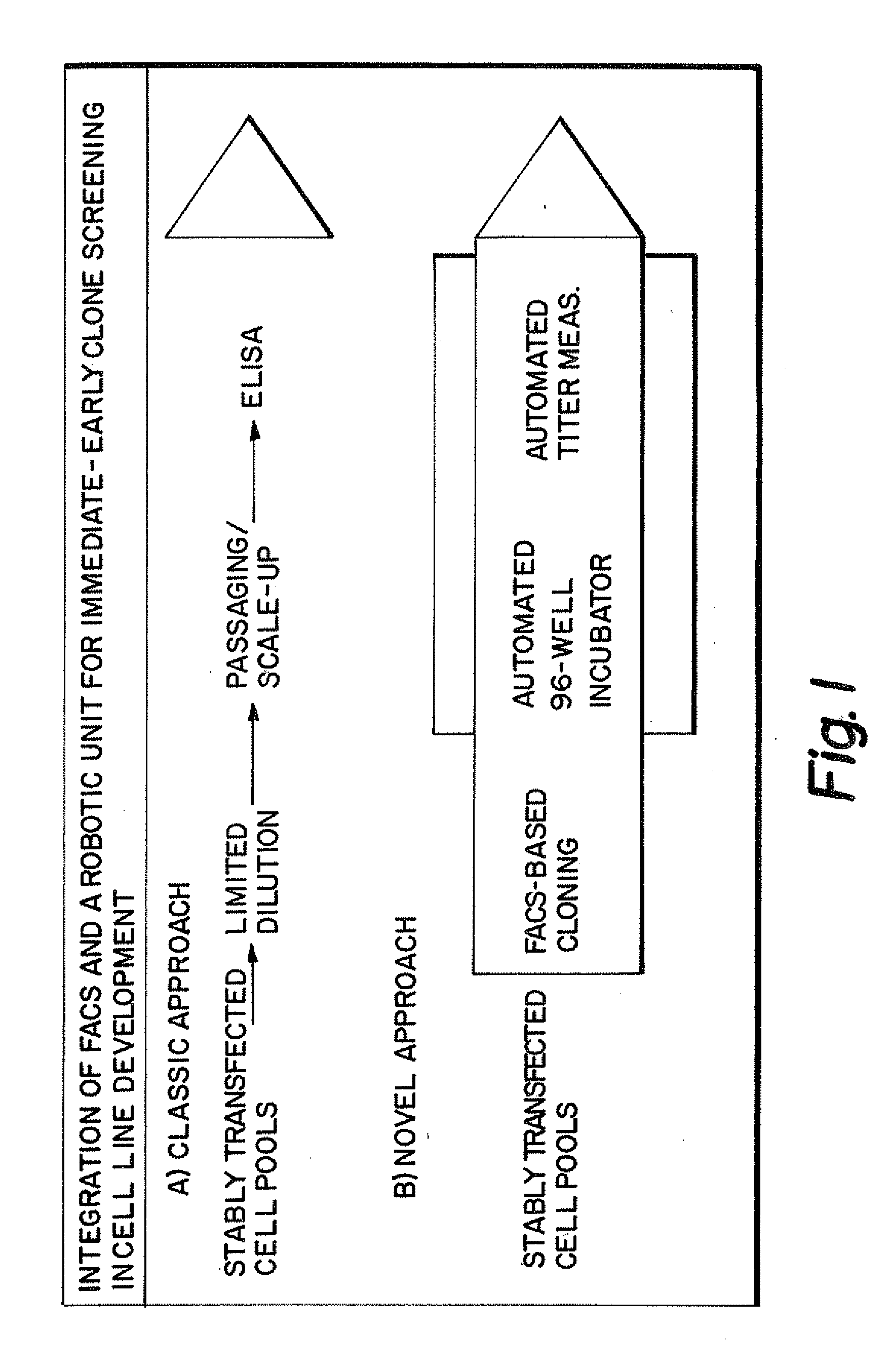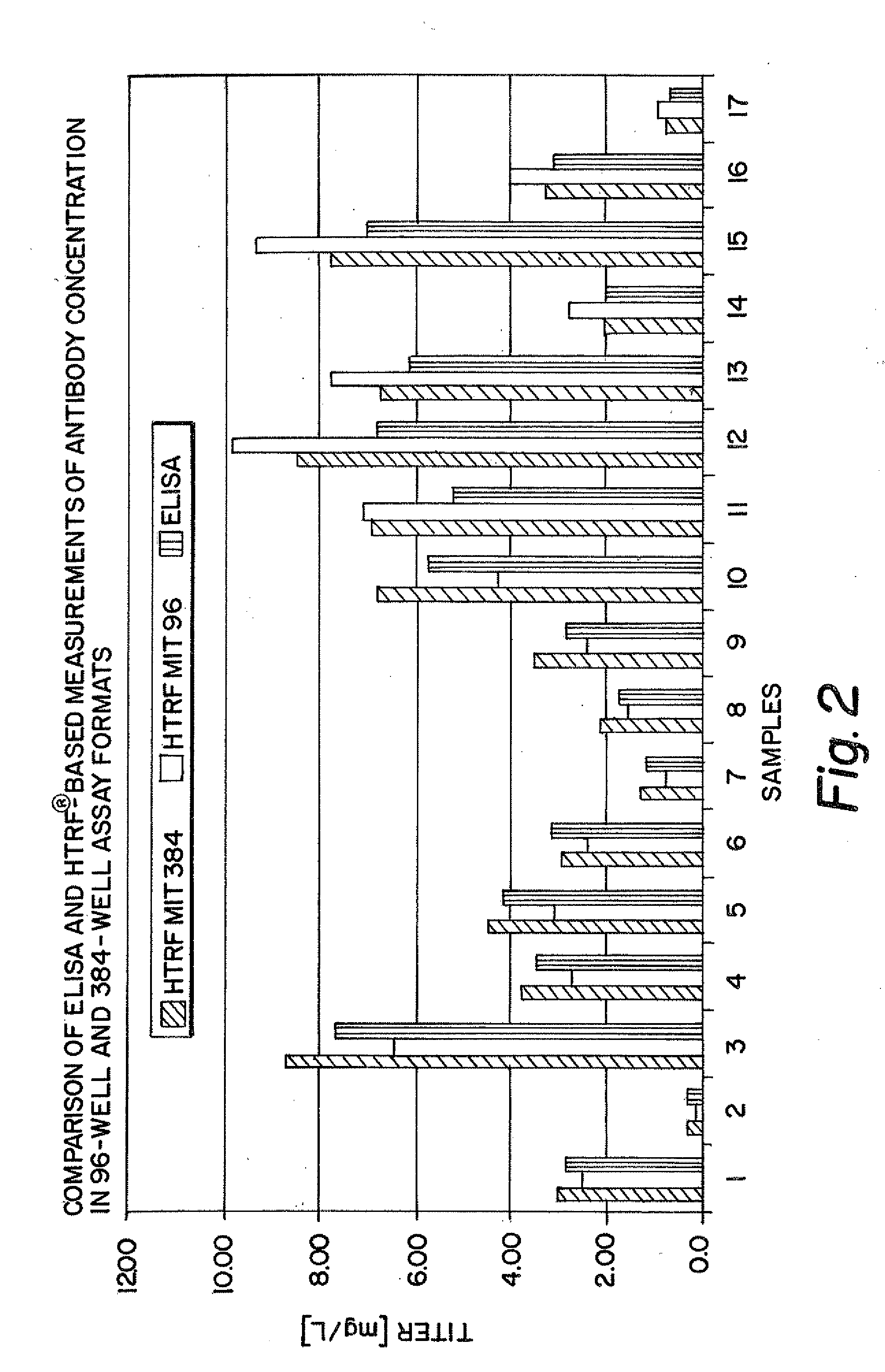Methods of selecting cell clones
- Summary
- Abstract
- Description
- Claims
- Application Information
AI Technical Summary
Benefits of technology
Problems solved by technology
Method used
Image
Examples
example 1
A Robotic Platform Performing HRTF-Based Measurements of IgG Antibodies in Culture Supernatants of CHO Cells in a Sterile Environment
[0159]FIG. 1B shows the schematic of the immediate-early screen set up used. The product titer of culture supernatants of cells growing in 96-wells subsequent to FACS-based single cell deposition were measured. Furthermore the titer measurements occurred in a fully automated manner in a 384-well format to allow high-throughput primary screening for high-producer clones.
[0160]To evaluate the feasibility of using the described HTRF assay instead of the classic ELISA several IgG producing CHO cell populations were analyzed for antibody production with both assays side by side (FIG. 2). In addition it was assessed how a shift from the current 96-well format to a 384-well format would affect the assay performance. FIG. 2 shows a good correlation between the three assay formats for all cell populations over a wide range of absolute antibody concentrations fr...
example 2
Automated Immediate Early Screening of Monoclonal Cho Cells Producing an IgG-4 Type Antibody
[0162]Genes encoding an IgG4 type antibody were transfected into CHO DG44 cells growing in chemically defined serum-free media and stable cell pools were generated by selection with neomycin. Cells were subjected to FACS-based single cell cloning including the use of autologous feeder cells as described above. After a period of time of 15 days post single cell cloning, 42 plates were transferred into an automated incubator and the immediate early clone screening program was initiated. Supernatants of all clonal cultures were taken every 3 days and the antibody concentration was measured by the described HTRF assay.
[0163]FIG. 4 shows the results for 16 representative clonal CHO cultures (panel 1-16 as indicated) as they grow up from single cells in 96-wells. For most cultures, titer curves indicate that they enter exponential growth phase at around day 15 post single cell deposition (such as c...
example 3
[0166]Automated immediate early screening of monoclonal CHO cells producing an IgG-1 type antibody and further subcultivation in MAT6 wells and comparison of productivity in immediate early clone screening and MAT6 scale Genes encoding an IgG1 type antibody were transfected into CHO DG44 cells growing in chemically defined serum-free media and stable cell pools were generated by selection with neomycin. Cells were subjected to FACS-based single cell cloning including the use of autologous feeder cells as described above. After a period of time of 10 days post single cell cloning, plates were transferred into an automated incubator and the immediate early clone screening program was initiated. Supernatants of all clonal cultures were taken four times every two to three days and the antibody concentration was measured by the described HTRF assay.
[0167]Clones were picked at day 17 after single-cell deposition, expanded into 6-well plates and subjected to titer determination during thre...
PUM
| Property | Measurement | Unit |
|---|---|---|
| Fraction | aaaaa | aaaaa |
| Fraction | aaaaa | aaaaa |
| Fraction | aaaaa | aaaaa |
Abstract
Description
Claims
Application Information
 Login to View More
Login to View More - R&D
- Intellectual Property
- Life Sciences
- Materials
- Tech Scout
- Unparalleled Data Quality
- Higher Quality Content
- 60% Fewer Hallucinations
Browse by: Latest US Patents, China's latest patents, Technical Efficacy Thesaurus, Application Domain, Technology Topic, Popular Technical Reports.
© 2025 PatSnap. All rights reserved.Legal|Privacy policy|Modern Slavery Act Transparency Statement|Sitemap|About US| Contact US: help@patsnap.com



